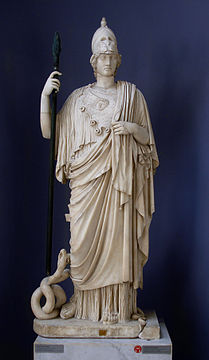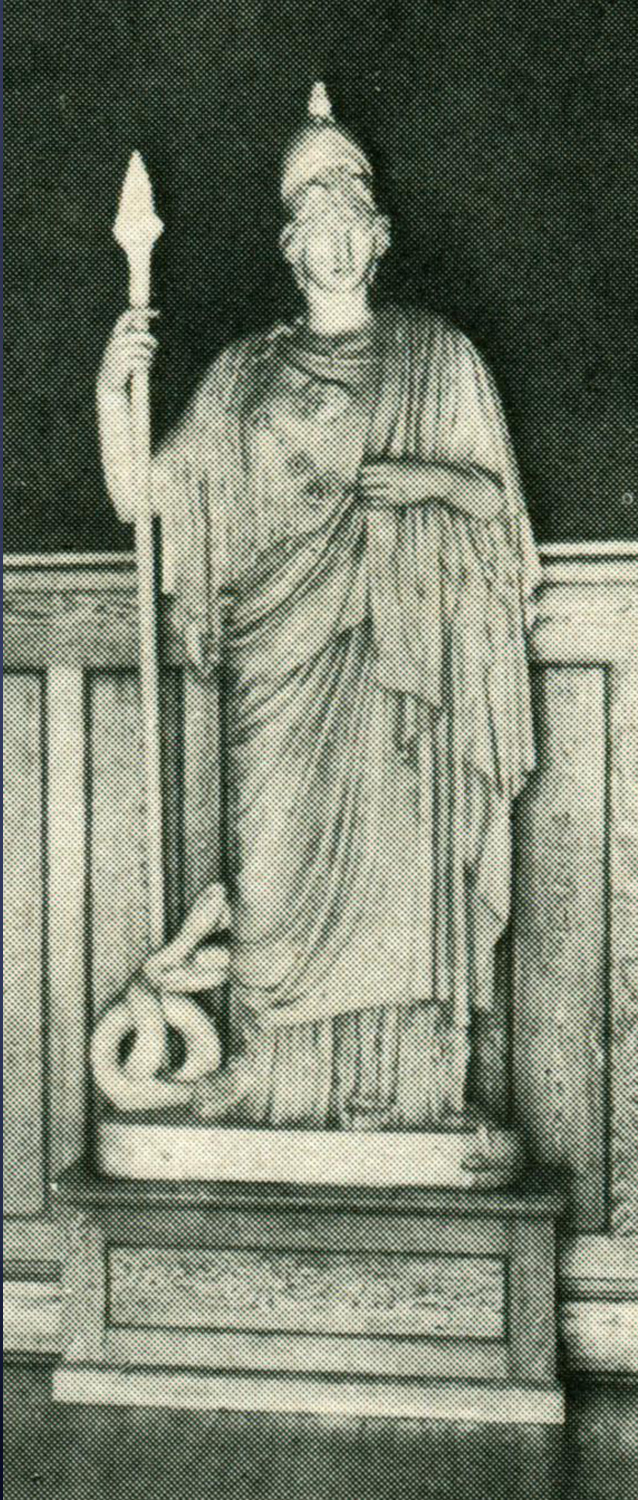The oldest statue on campus was a plaster statue of Minerva, the school’s patron goddess and symbol. That statue was a gift of the Class of 1907 and stood prominently in the entrance hall of the Student’s Building from 1908 to 1950, when the building was razed. The Class of 1907 Minerva statue was a type of plaster sculpture popular in the late 1800s-early 1900s and made from molds taken directly from the original ancient marble statue. The statue from which the cast was taken is known as the Minerva Giustiniani (MC 278), and is located in the Braccio Nuovo of the Musei Capitolini in Rome, Italy. This original statue is a Roman copy of a no longer extant Greek statue of Athena, thought to have been sculpted in the 5th century BC.
  |
| Minerva Giustiniani, on left; Class of 1907 Minerva, on right |
Although the Minerva/Athena issue has been discussed before, it is enlightening to see how the history of talking about art may have also influenced the identification of Minerva as Athena. It seems that many who studied sculpture retrospectively, that is, far after the sculptures had been made, were more familiar with Roman history than Greek and so described many Greek sculptures in terms of Roman gods and goddess.* This perhaps helps to understand why McIver chose Minerva, rather than Athena, as the symbol for our school.
We do not know exactly who made our plaster statue of Minerva, but there were several companies who produced such statues and one of the most well-regarded was Caproni Brothers in Boston. A 1911 catalog from Caproni Brothers shows on page 12, their Minerva Giustiniani plaster statue sold for $100 (shipping excluded), which would be about $2,500 today, adjusted for inflation.
Plaster statues such as this were a common sight in universities, colleges, schools, and museums in the late 1800s and early 1900s and companies like Caproni Brothers supplied complete museums-worth of statues to institutions such as Harvard, Yale, Princeton, and Cornell Universities, as well as the University of Texas, which still has one of the largest collections of statues of this kind. Eventually, around the 1930s and 1940s, plasters casts began to fall out of favor and many collections were sold off, dismantled, or destroyed.
Article written by Scott Hinshaw
Notes
The Blanton Museum of Art (The University of Texas at Austin) has a great presentation about plaster cast statues, how they were made, why they were acquired, and how they were used at the height of their popularity. Check it out!
*”…most antiquarians before Winckelmann (1717-1767) had been far more familiar with Roman than with Greek history and literature, and a majority of the most admired antique statues had therefore been given Roman titles.” Haskell and Penny, Taste and the Antique, The Lure of Classical Sculpture 1500-1900, Yale University Press, 1981
The 1911 Caproni Brothers catalog can be viewed online.
Photo of the Minerva Giustiniani is from https://commons.wikimedia.org/wiki/File%3AAtena-Giustiniani—Vatican.jpg By Tetraktys (Own work) [CC BY-SA 3.0 (http://creativecommons.org/licenses/by-sa/3.0) or GFDL (http://www.gnu.org/copyleft/fdl.html)], via Wikimedia Commons
